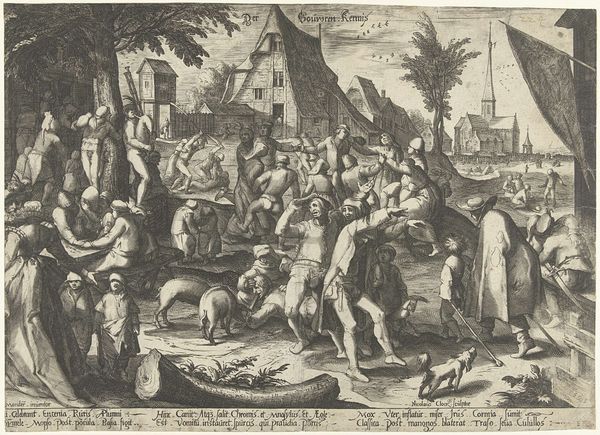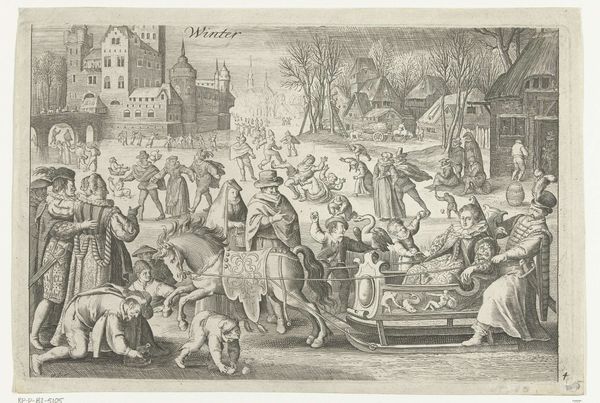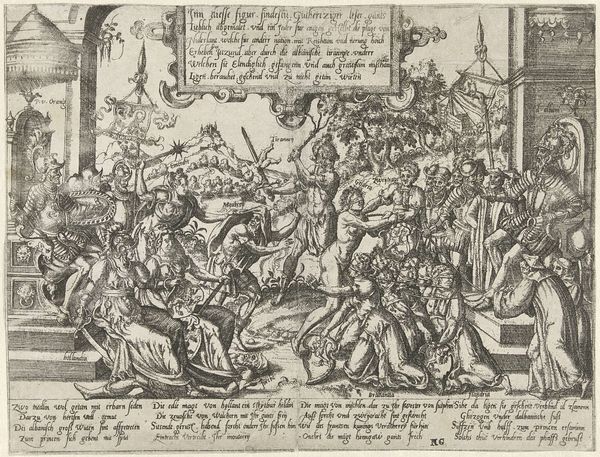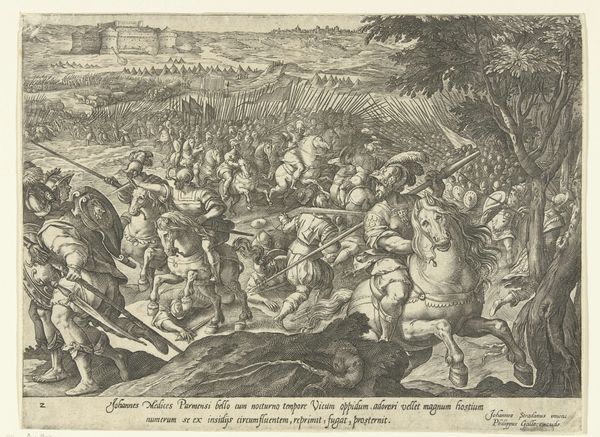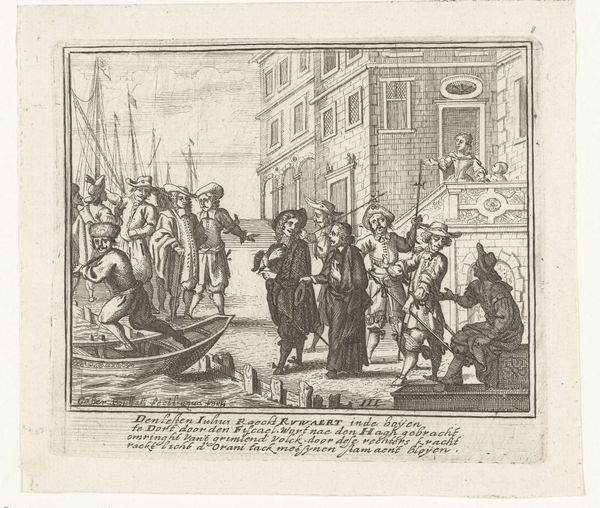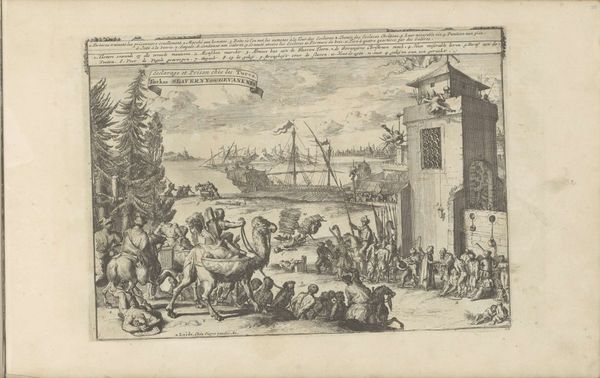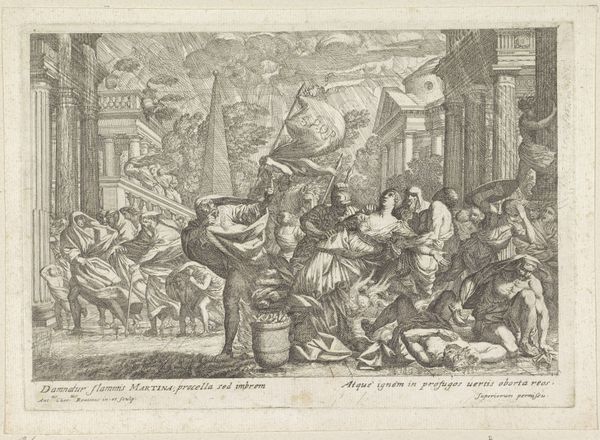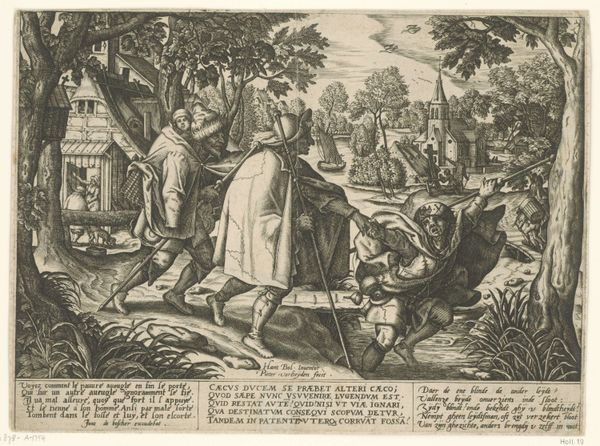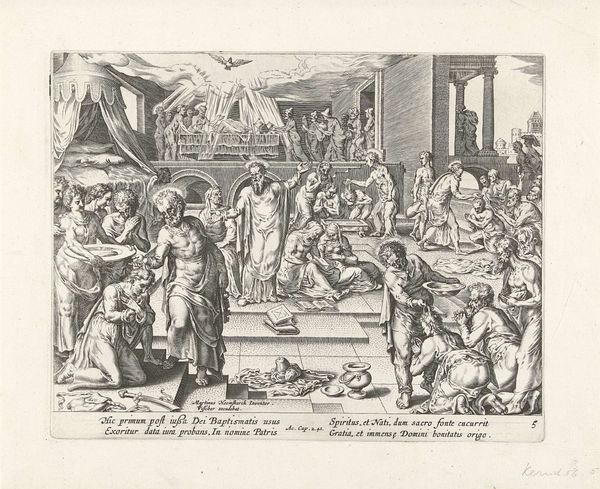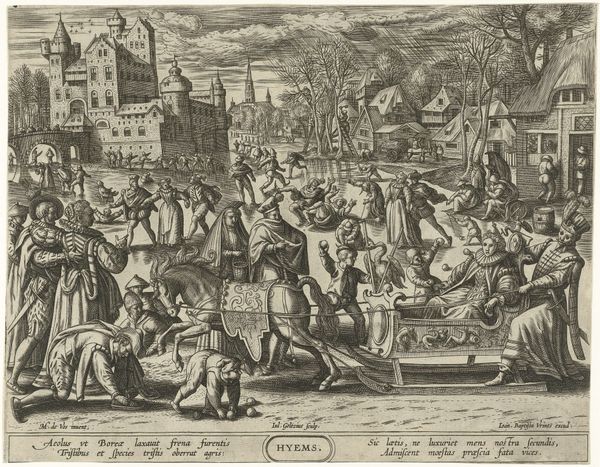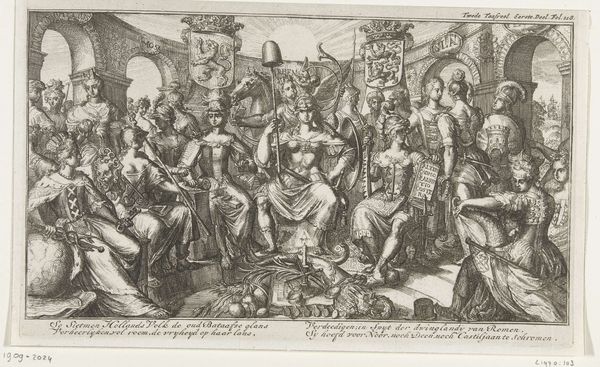
print, engraving
#
ink drawing
#
pen drawing
# print
#
pen illustration
#
pen sketch
#
figuration
#
line
#
pen work
#
genre-painting
#
northern-renaissance
#
engraving
Dimensions: height 185 mm, width 270 mm
Copyright: Rijks Museum: Open Domain
Editor: So this is "Boerenkermis," or "Peasant Kermis," by Gillis van Breen, dating back to sometime between 1593 and 1610. It’s an engraving, so a print, teeming with figures – feels like organized chaos! How do you interpret this work? Curator: Chaos is a key term, absolutely! Consider the social function of such images. Genre scenes like these, popular in the Northern Renaissance, offer more than just a snapshot of everyday life. What story does the imagery communicate to the viewers? How does this reinforce existing class distinctions or even offer subtle critiques of social norms? Editor: It almost feels… instructional? Like a "don’t be like *them*" kind of vibe? There's a dog biting at a walking stick, people falling about, drinking, things are generally riotous. Curator: Exactly. It's crucial to examine who the intended audience was. Prints like this, though depicting peasants, weren’t necessarily *for* them. They were circulated among the educated, urban elite, often reinforcing their preconceived notions about rural life. The 'chaotic' and 'riotous' behaviors might be understood not as simple depictions, but as cautionary tales, emphasizing order and reason, values highly prized by the upper classes. Have you ever seen other artwork around that time period conveying a similar message? Editor: I think so, especially when we studied class relations during that period. Were the upper class perhaps making an example of them, even slightly poking fun? Almost villainizing lower social standing? Curator: It’s a fine line to walk in the social commentary it provided. Such art also offers a glimpse into the lived experience of these individuals and what some of their normal behaviors included at a glimpse of daily life. Now, consider its place within the history of printmaking. How did the development and spread of printmaking technology influence the dissemination of such imagery, and in turn, shape social perceptions? Editor: Wow, I never considered all of that. So much more than just a party scene. Curator: Precisely. Looking at art through a socio-historical lens gives these old images modern day context and relevance. Hopefully, our audience takes away an expanded appreciation of historical artwork as social narratives and commentaries.
Comments
No comments
Be the first to comment and join the conversation on the ultimate creative platform.

